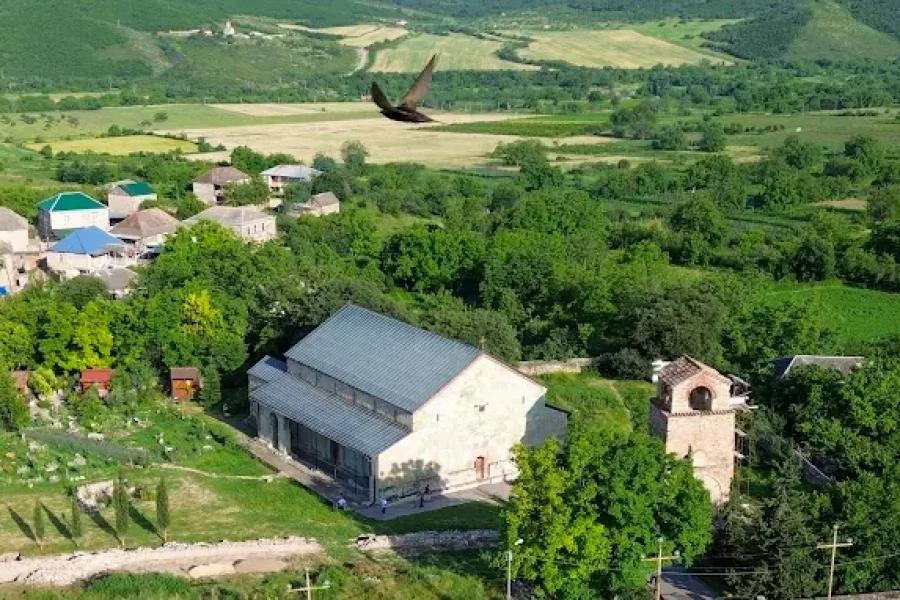Satikhari Fortress: A Watchtower on the Plain
The ruined tower of Satikhari Fortress is a classic example of a late-feudal watchtower that once dotted the landscape of Shida Kartli. Located on the plains, its purpose was clear and vital: to serve as an observation post and a first line of defense for the surrounding agricultural lands and villages.
The story of this tower is one of local defense in an era of constant threat. Built in the 17th-18th centuries, it would have been manned by a small garrison of local soldiers, tasked with watching for raiding parties. Upon sighting an enemy, they would have lit a signal fire or sent a rider to warn the larger castles and communities in the region. The tower itself would have served as a temporary refuge.
A visit to Satikhari Fortress today is a quick and easy trip into the past. The ruins are modest but evocative, a single tower standing as a lonely sentinel. It is not a site of grand battles but one of quiet, daily vigilance. It offers a powerful reminder that the security of the Georgian kingdom depended not just on its famous mountain strongholds, but on a vast network of these small, humble, and essential watchtowers.
🗺️ Geography & Location
Exact Location:
The fortress is located near the village of Satikhari, in the Gori Municipality, Shida Kartli region.
Strategic Placement:
Positioned on the plains to provide a clear line of sight for observing movement across the flat, open landscape.
📖 History & Background
Date of Construction & Origins:
A late medieval tower, likely from the 17th-18th century.
Historical Role:
A local watchtower and signal post.
Status:
A cultural heritage monument, in ruins.
🏗️ Architecture & Design
Materials Used:
Cobblestone and local stone.
Key Features:
- Single Watchtower: The monument consists of the ruins of a single defensive tower.
- Plains Fortification: Designed for observation in an open, flat terrain.
Unique Aspects:
A typical and accessible example of a standard plains watchtower from the late-feudal period.
🌟 Cultural & Tourist Significance
Local History:
A tangible piece of the local area’s history of defense and community life.
🚶 How to Visit
Best Time of Year to Visit:
Accessible year-round.
Accessibility:
Easy. Typically located near a village and accessible via a short walk from a local road.



Leave a review